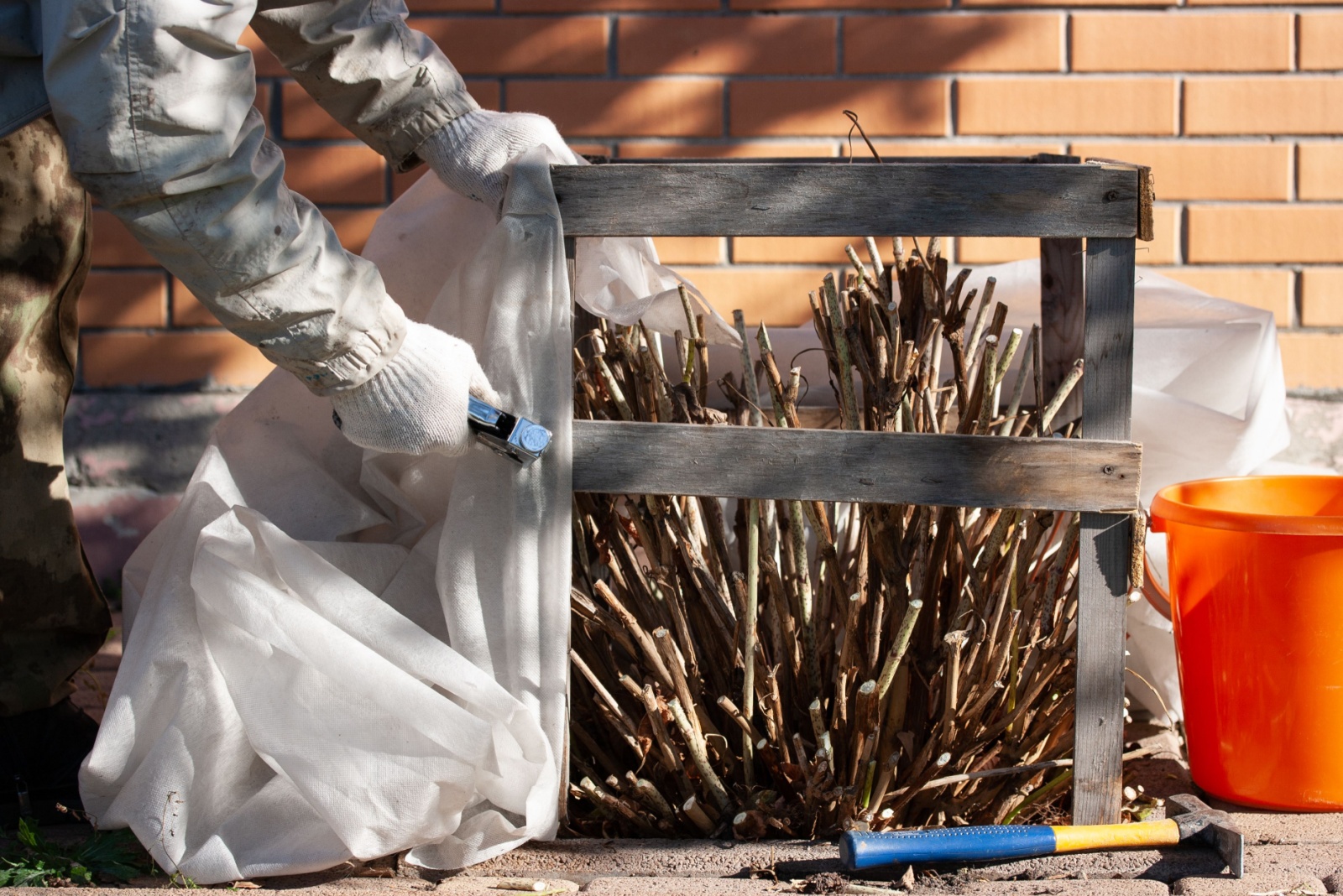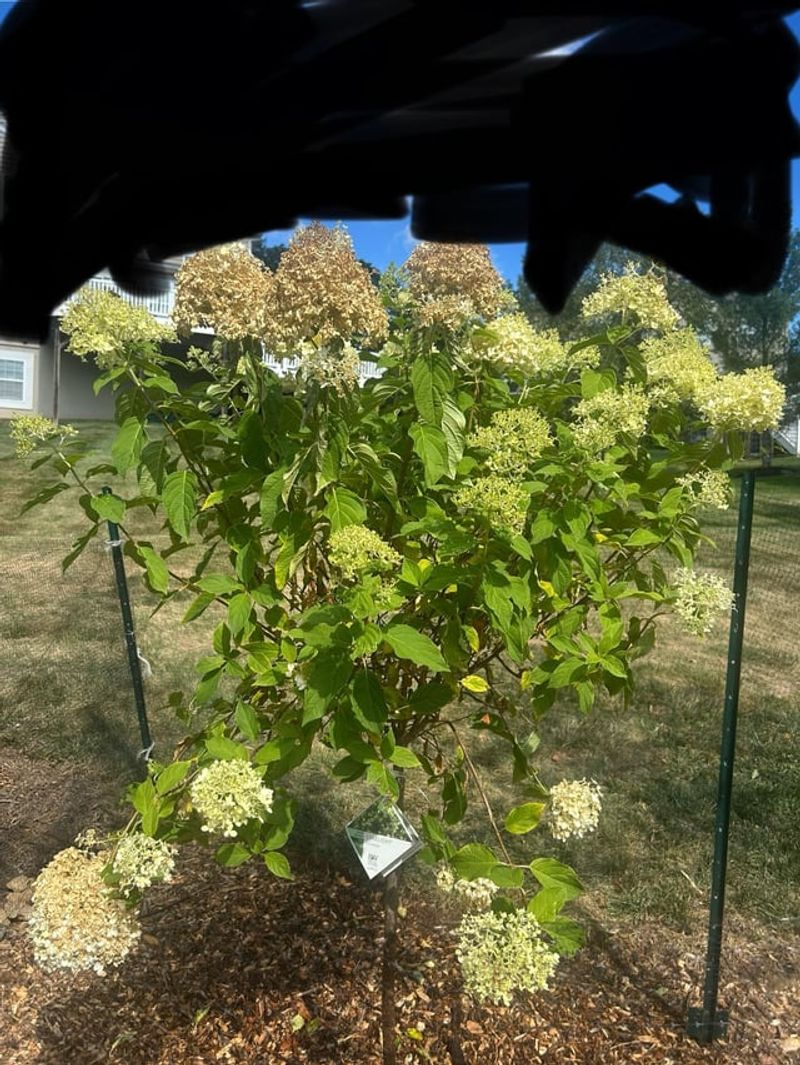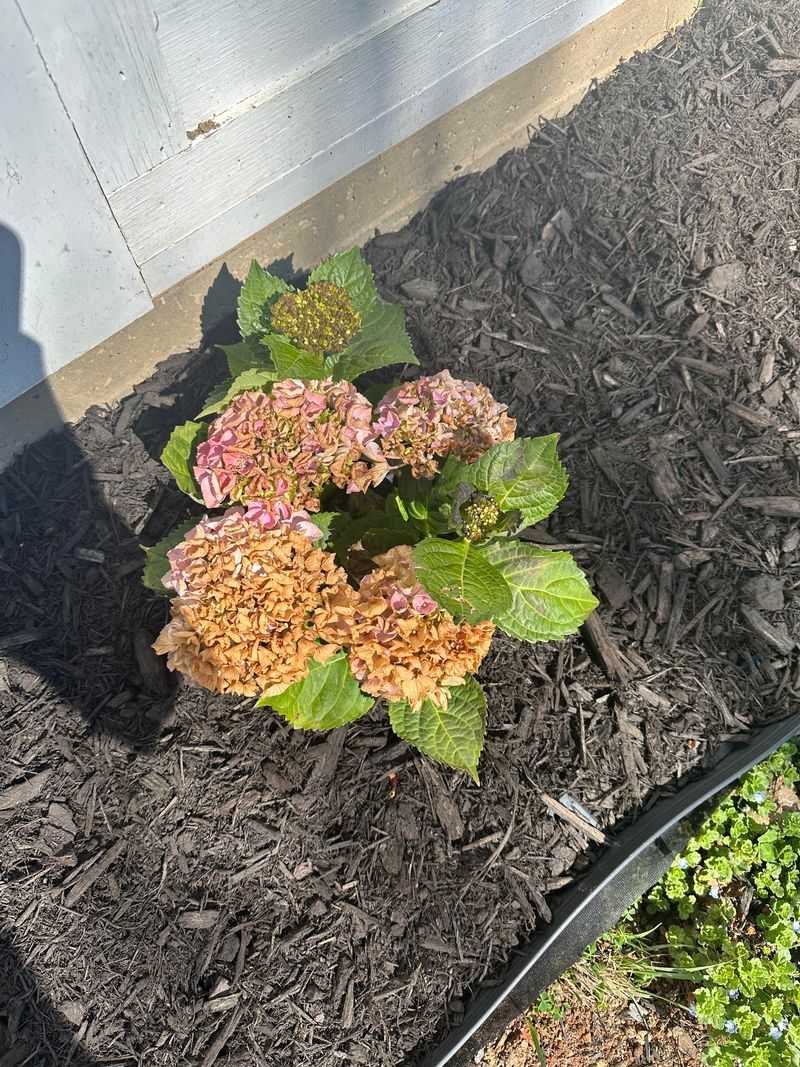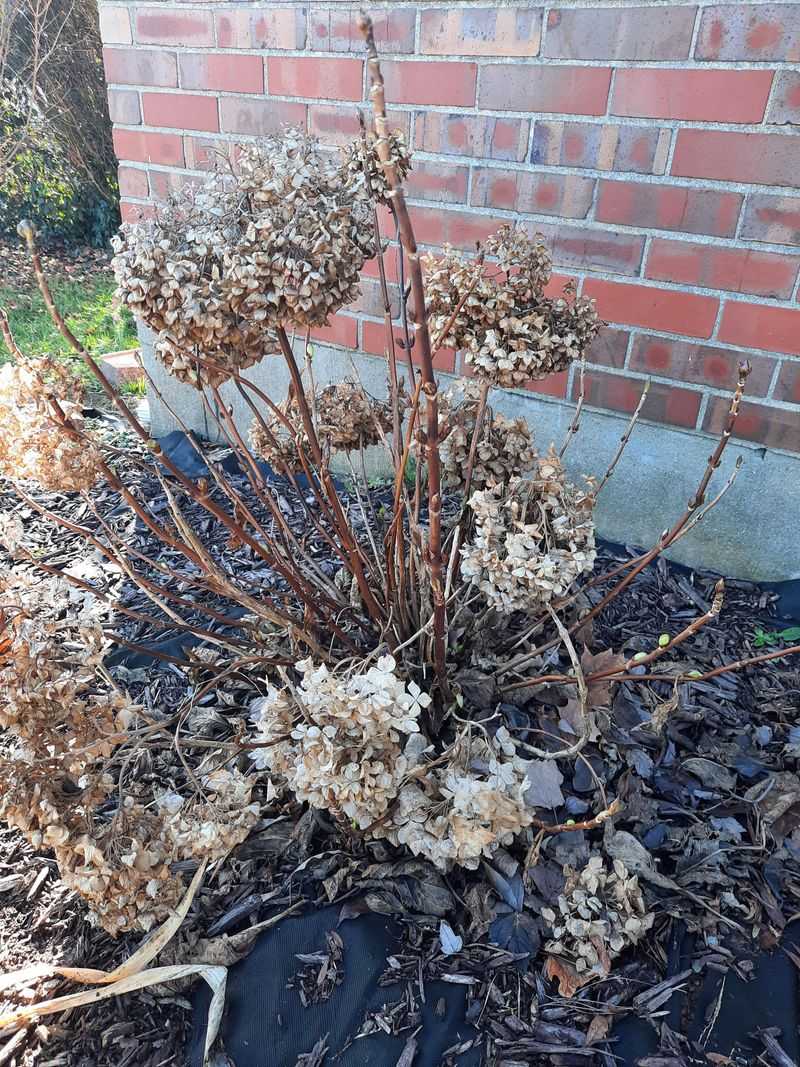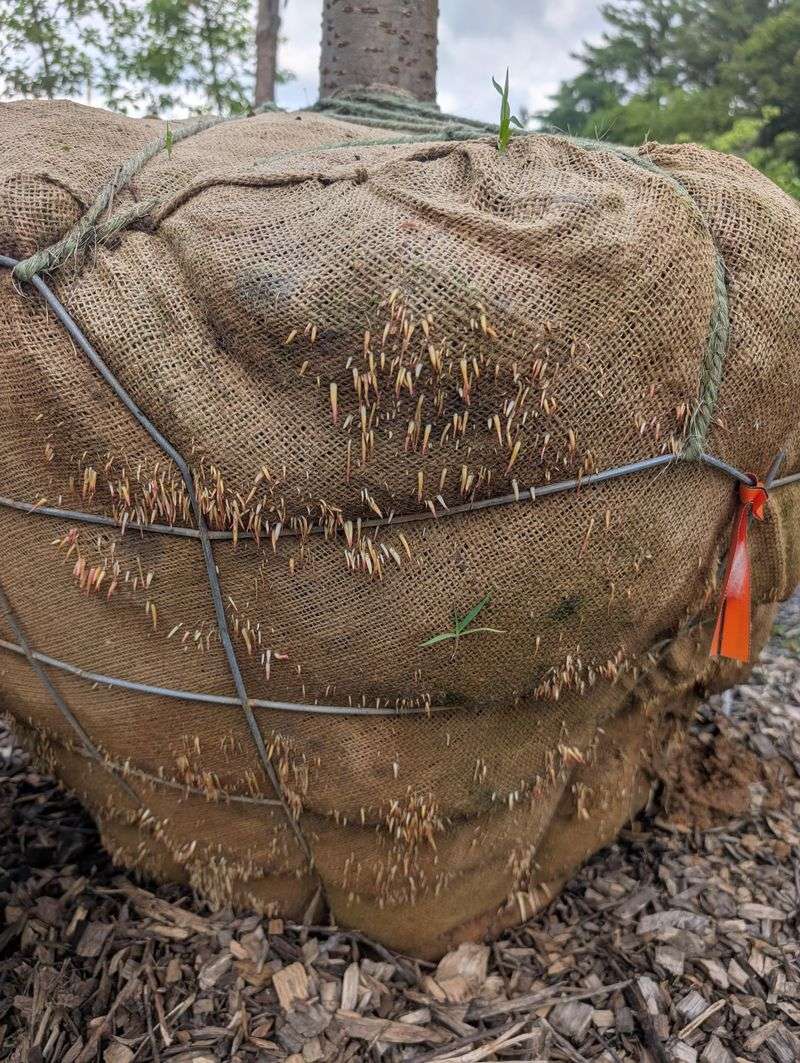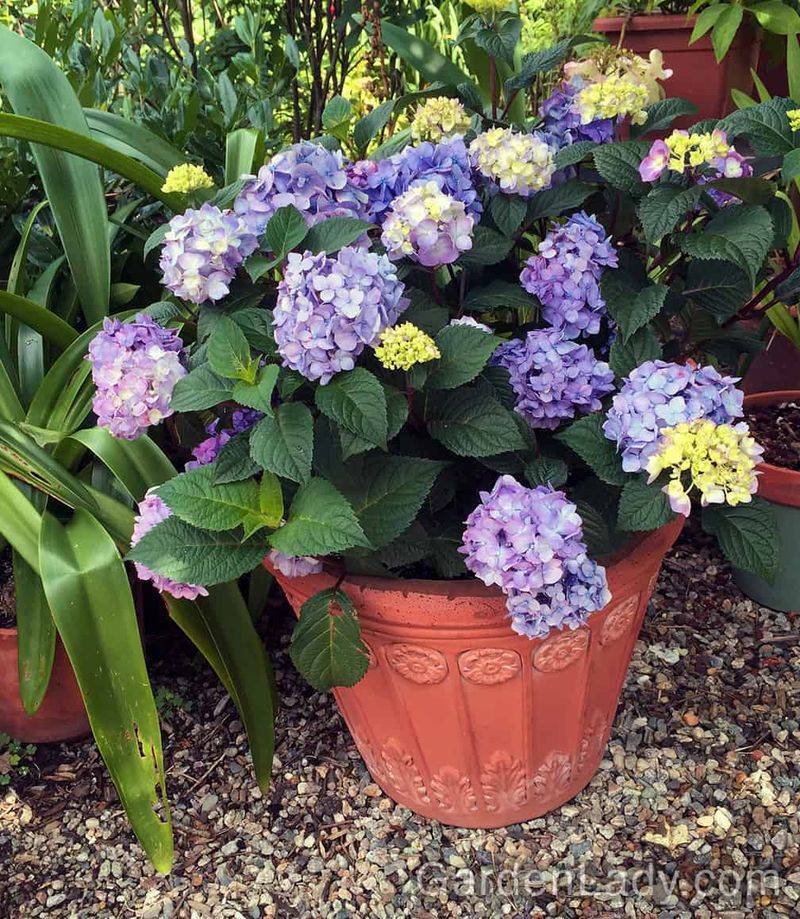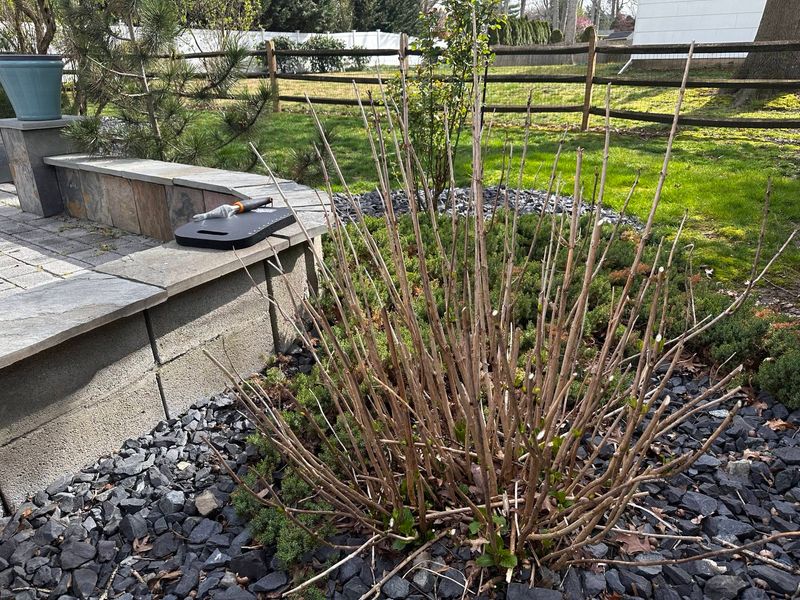When temperatures drop suddenly in Mississippi, your beautiful hydrangeas face serious danger from freezing weather. Without proper protection, frost can damage delicate buds, wilt leaves, and even destroy entire plants that took years to grow.
Acting fast before a freeze arrives makes all the difference between thriving blooms next spring and disappointing brown stems.
1. Water Your Plants Deeply The Day Before
Moist soil holds heat much better than dry ground, creating a natural warming blanket around your hydrangea roots. Give your plants a thorough soaking at least 24 hours before freezing temperatures arrive in Mississippi.
Wet soil releases moisture into the air overnight, which actually helps prevent frost damage to stems and branches. Skip this step only if heavy rain just soaked your garden, but otherwise grab that hose and water generously around the base.
2. Pile Mulch High Around The Base
Building a protective mulch mountain around your hydrangeas insulates roots from bitter cold that penetrates the ground. Use pine straw, shredded leaves, or wood chips to create a layer at least 4-6 inches thick.
Spread the mulch out about 18 inches from the plant center, forming a donut shape that covers the root zone. Remember not to pile mulch directly against the stems, as this traps moisture and invites rot problems later.
3. Cover Plants With Breathable Fabric
Draping old bedsheets, burlap, or frost cloth over your hydrangeas traps warmth rising from the soil while blocking icy winds. Plastic tarps seem tempting but actually cause more harm because they trap moisture and prevent air circulation.
Secure your fabric covers with stakes, bricks, or landscape pins so strong gusts cannot blow them away overnight. Remove the covers once morning temperatures climb above freezing to let sunlight reach your plants.
4. Build A Windbreak With Stakes And Burlap
Bitter north winds during a freeze can be just as damaging as the cold itself, sucking moisture from branches and causing severe winter burn. Hammer wooden stakes into the ground on the windward side of your hydrangeas, then attach burlap to create a protective wall.
This simple barrier blocks harsh gusts while still allowing air to flow through the natural burlap weave. Your plants stay much healthier when shielded from relentless wind exposure during freezing Mississippi nights.
5. Move Potted Hydrangeas To Sheltered Spots
Container-grown hydrangeas suffer worse freeze damage because their roots sit above ground without earth insulation. Relocate pots to your garage, covered porch, or against a south-facing wall where building heat provides extra warmth.
Even moving containers under wide tree branches or eaves offers significant protection from frost settling on leaves. Group multiple pots together since clustered plants share warmth and create their own microclimate that stays slightly warmer overnight.
6. Avoid Pruning Before Cold Weather Arrives
Cutting back stems might seem like good preparation, but pruning actually encourages new growth that freezes instantly when temperatures plummet in Mississippi. Those tender new shoots have no cold tolerance and wither quickly, weakening your entire plant.
Wait until late winter or early spring to prune hydrangeas after all danger of hard freezes passes. Leaving old stems intact through winter provides natural insulation and protects next season’s flower buds hiding along the branches.
7. Check Weather Forecasts Regularly During Winter
Mississippi weather changes quickly, and surprise cold snaps can catch gardeners off guard if they are not paying attention. Download a reliable weather app or check local forecasts every few days throughout winter months.
When meteorologists predict temperatures dropping into the twenties or below, you have time to implement emergency protection measures. Being proactive based on accurate forecasts means your hydrangeas survive unexpected freezes that damage unprepared gardens across the neighborhood.

